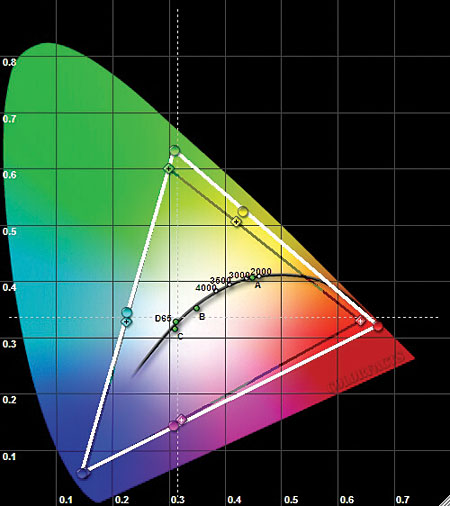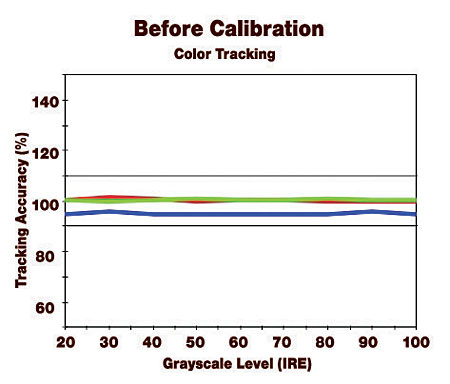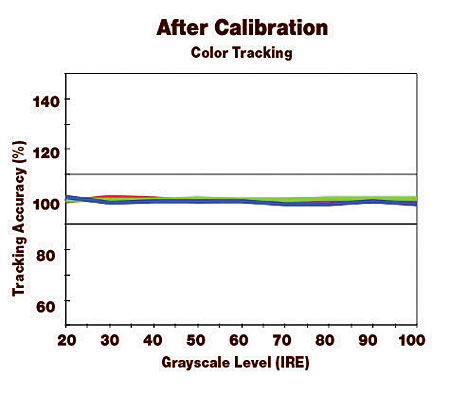Panasonic PT-AE2000U LCD Projector HT Labs Measures
Contrast Ratio:
Full On/Full Off: 2,835:1
Unless otherwise noted, all of the measurements were taken with the lamp power set to normal and in the Color1 picture mode, adjusted for the most accurate picture. The dynamic iris was engaged. The screen was a Stewart Studiotek 130 (78 inches wide, gain 1.3). The time on the projection lamp was 78 hours.
I measured a peak contrast ratio of 2,835:1 at a contrast setting of +8. The Normal picture mode squeezed considerably more brightness out of the projector (23.44 ft-L peak white, 0.006 ft-L black for a 3,907:1 peak contrast ratio). But even after recalibration, this resulted in a measurable sacrifice in color accuracy (both color space and color tracking). Similarly, increasing the contrast control to +10 upped the peak contrast ratio (3,500:1, 14.0 ft-L/0.004 ft-L), causing a slight blue shift at the bottom of the brightness range (20 IRE), a slight red shift at the top (100 IRE), and slightly more aggressive white clipping at 100 IRE. The subjective increase in light output at a contrast setting of +10, however, was extremely subtle compared with a +8 setting and offered no real benefit on my screen.

The Panasonic calibrated extremely well in the Color1 picture mode. The final color tracking was excellent, with the overlapping red, green, and blue lines indicating close matching to the standard D65 white point across the full brightness range. The color space was just slightly oversaturated in red and green, deviations that are unlikely to be significant for most viewers.
The projector’s 480i-to-1080p upconversion ranged from good to excellent on all of my standard-definition processing tests, dropping to fair only on the waving-flag test and on 2:2 (video mode) pulldown. Its HD processing (converting a 1080i source to the projector’s native 1080p resolution) was superb, including proper handling of 3:2 pulldown on film-based material.


Both black-and-white (luma) and color (chroma) resolution were good at HD resolutions, though with a slight rolloff at the highest frequencies. This was more visible in the color test patterns, although neither was very significant with real program material. SD resolution was very good at 480p but was only fair in luma and poor in chroma at 480i. Sharpness test patterns were slightly less crisp than the best I’ve seen from 1080p displays, and while a 1080i sharpness pattern was clean, other resolutions, including 720p, showed varying degrees of both vertical and horizontal edge enhancement that could not be defeated even at the 0 setting of the sharpness control.
The projector’s overscan (with the overscan control set to 0) was 0 percent in 1080i and 720p and averaged about 3.5 percent in 480i and 480p.—TJN























































